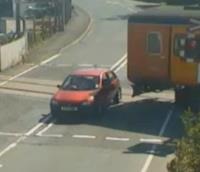For years now my inbox has been filled to overflowing with spam emails from “experts” trying to sell me CPD courses. Over time they’ve developed from basic “CPD” sessions to the “ultimate coaching” courses. Some of these emails were sent very frequently – perhaps as often as… tri-daily, if you get my drift! I was reliably informed – perhaps not quite as directly as that, but the implication was clear – that unless I did their coaching course I would be a poor instructor who would fail my next check test. The only way was The Coaching Way.
But then the DSA recently turned around and said it wasn’t going to make CPD compulsory. Even before that, as the DSA’s Learning To Drive trials concluded and the initial Client-centred Learning (CCL) training was given to participants (of which I was one), it was made clear that CCL was merely another tool that instructors could use along with their other techniques. CCL would simply be a part of the training for all new PDIs/ADIs going forward, but existing ADIs weren’t going to be thrown in jail if they didn’t use it.
I predicted that the spammers would change tactics. And they have. I’m now receiving emails telling me that I need to do their CCL course, which is funny when you consider that I already did CCL training with the DSA! But there is a little bit of a difference. As I mentioned above, the DSA made it absolutely clear that future check tests would not penalise ADIs whether or not they used CCL – there was to be no sea change from one system to the other as far as existing ADIs were concerned.
Personally, I was a little disappointed over this. When the Learning To Drive trial started the implication was that this was to be a complete overhaul of the current system. But three years down the line they backed off from anything compulsory and stated clearly that CCL was absolutely and definitely only an additional tool in the toolbox of the existing ADI. But I digress. I was saying that CCL was not mandatory, and not using it was not to be career limiting as far as the check test was concerned.
Well, according to the latest spam email:
Client-Centred Learning (CCL) is about to enter the arena under the guise of the new ADI Standards Check and for some instructors this will be an entirely different ball game from the one they’ve been used to. Others will see the change as a breath of fresh air, which will reinforce much of what they have been doing for years. Whatever your starting point, the need for development is probably greater now than ever before to secure your place in a successful future.
All this in order to sell their BTEC course in “CCL & coaching” – now with an “easy payment option”.
Soon after I posted this, a reader drew my attention to an example of a post on the Facebook page of the people I am referring to above. I’d like to quote it here:
Hi all. I would like your advice please. I took out a new female pupil for her 1st driving lesson which she said she thoroughly enjoyed and learnt a lot. I used scaling and goal setting. She wants to work on her reversing on her next lesson and is going to decide what else she wants to do on that lesson. Now here is my question. My pupil closed the car door rather hard almost a slam of the door and has not booked another lesson but will as has paid for them. How would you read the situation. Do you think my pupil closed the car door too hard because she wanted to make sure it was closed properly, she closed it hard because she was glad the lesson was over or a combination of both.
Ignoring the possibility that the post is just someone on a wind-up, doesn’t it remind you of something from Invasion Of The Body Snatchers?
I have to be honest about something here. I am very sensitive to body language and all the stuff that goes with it. Don’t get me wrong, here. I’m not likely to set up some sort of wussy, new-age coaching school involving it, but I can just read the signs very well, and I use that as necessary. And the bottom line is that if a pupil is upset over something – even if they deny it – I can usually tell.
Having said that, if someone came to me wanting lessons, only to discover that they were paying me to make them teach themselves and make up their own lesson content, I wouldn’t be too surprised if they didn’t book another lesson and slammed the car door as they got out.
It makes you think, doesn’t it?
 the CCTV cameras both sides of the crossing.
the CCTV cameras both sides of the crossing.